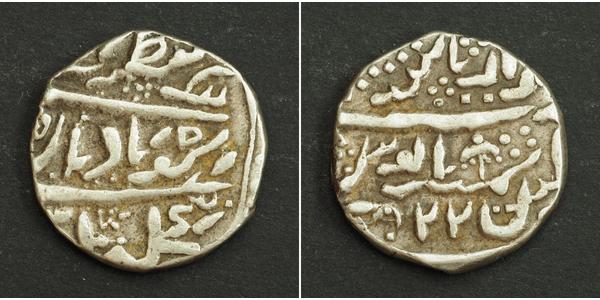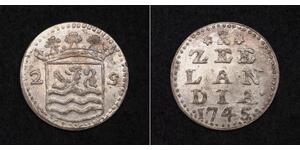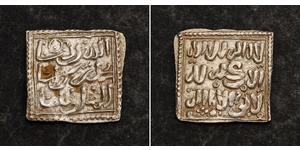(sold for $26.0)
1860, India, Jaisalmir State, Ranjit Singh. Scarce Silver Rupee Coin. XF!
Mint Year: 1860 Reference: KM-34. Denomination: Rupee Condition: XF for issue! Weight: 10.47gm Diameter: 23mm Material: Silver
Jaisalmer State was a kingdom established in the area of present-day Rajasthan, India. In 1156 Rawal Jaisal moved the capital from Ludarva to Jaisalmer because the old capital Ludarva was vulnerable to invasions from the Turko-Afghan and Baloch tribes. Bhati rajputs continued to rule Jaisalmer independently until 1818, when it signed a treaty with the British Empire effectively making it a British Protectorate, a Princely Stateentitled to a 15-gun salute.
The state of Jaisalmer had its foundations in what remains of the Empire ruled by the Bhati dynasty. Early Bhati rulers ruled over large empire stretching from Ghazni[2] in modern-day Afghanistan to Sialkot, Lahore and Rawalpindi in modern-day Pakistan to Bhatinda and Hanumangarh in Modern day India. The empire crumbled over time because of continuous invasions from the central Asia. Bhati dominions continued to be shifted towards the South as they ruled Multan, then finally got pushed into Cholistan and Jaisalmer where Rawal Devaraja built Dera Rawal / Derawar. According to Satish Chandra, the Hindu Shahis of Afghanistan made an alliance with the Bhatti rulers of Multhan, because they wanted to end the slave raids made by the Turkic ruler of Ghazni, however the alliance was defeated by Alp Tigin in 977 AD. Jaisalmer was the new capital founded in 1156 by Maharawal Jaisal Singh and the state took its name from the capital. On 11 December 1818 Jaisalmer became a British protectorate.
Traditionally, in the Middle Ages, the main source of income for the kingdom was levies on caravans, but the economy was heavily affected when Bombay emerged as a major port and sea trade replaced the traditional land routes. Maharawals Ranjit Singh and Bairi Sal Singh attempted to turn around the economic decline but the dramatic reduction in trade impoverished the kingdom. A severe drought and the resulting famine from 1895 to 1900, during the reign of Maharawal Salivahan Singh, only made matters worse by causing widespread loss of the livestock that the increasingly agriculturally based kingdom relied upon.
Maharawal Jawahir Singh’s (1914–49) attempts at modernization also failed to turn the kingdom’s economy around and it remained isolated and backward compared with other areas of Rajasthan.

|
Posted by:
anonymous 2019-07-12 |
250 Franc Belgium Silver Leopold III of Belgium
group has 7 coins / 7 prices
⇑
30 Soldo Italy
group has 14 coins / 13 prices
⇑
























